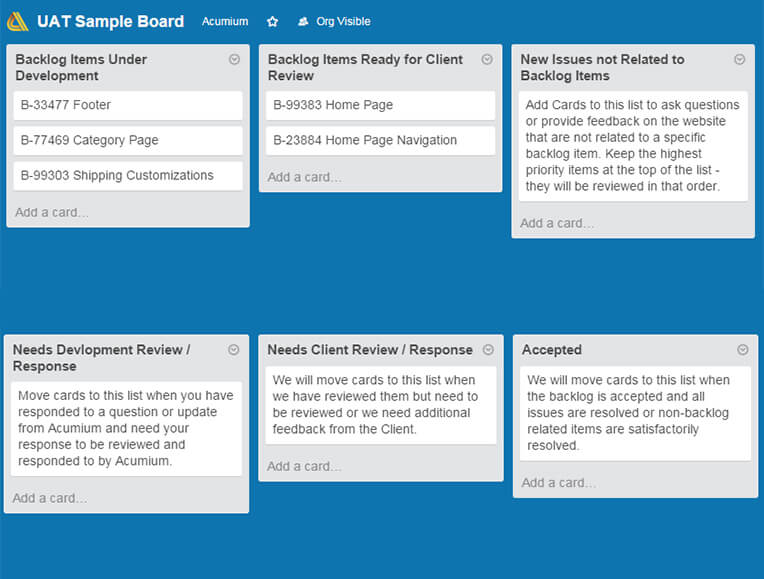
Last post we talked about how important the discovery phase is of any website development project. Taking the time upfront to address all relevant questions, develop personas and identify key business goals will leave you with a website that helps your company grow. It also makes the design, development and launch phases a lot easier! A solid discovery phase is necessary, but if the rest of the project does not follow the correct steps, you’re setting yourself up for failure. I don’t want to see you fail, so in this post I’ll walk you through the rest of the necessary phases of a well-thought-out detailed project plan.
Design Phase
Now take all of the information you learned from the discovery phase and incorporate it into an overall design from which you can accurately plan and build a website. Some people skip the design and go straight to coding. They think a sketch on a napkin is enough. It’s not. As mentioned last time, the project plan is key to a successful web development project.
Here comes another trade secret. If you want a website that produces results, you need to work with someone who truly understands the target audience and the nature of the business involved who can help craft a user experience that will fit your customers’ needs. Every aspect of a site should be designed around the type of audience that will be using it and the business problems that you are trying to solve.
Key people that should be involved in this process include a UX designer, who can create the right user experience for your target audience, and a lead developer, who can ensure the overall design of the site is possible within your budget and timeline. You should also consider consulting with an online marketer who can help you consider how the design will attract Google and customers.
Often companies will come in with artwork for the site, but they haven’t thought about how people will interact with it. They will spend a lot of money on beautiful photography and want a full-width banner without realizing the majority of their customers will hit their site first on mobile. Mistakes like these cost time and money to fix. That’s why it is important to have a significantly detailed conception of how the website will behave before any artwork is finalized and before any code is written.
Development Phase
At this point you should have your website objectives defined, your user experience mapped out, the features that will help enhance the user experience, a visual design that is appealing, and content created. Now it’s time for the actual website development.
Implementation should run smoothly if you created a detailed plan. However, there are a lot, and I mean a lot, of details that go into building a website. This is why you need to create a feedback mechanism with your website development partner and internal stakeholders. When your developer or manager comes across details you may have overlooked, having a clear communication strategy will help solve those issues so that when it comes time to launch everything runs smoothly. We recommend scheduling quick “check-ins” into the project plan.
But mistakes do happen. We are all human, right? If a mistake does happens, stop and take the time to figure out what went wrong. Go back and investigate the discovery path to that trajectory and figure out what was missed. And when you’ve found the problem, be patient and take the time to fix it then. Creating workarounds just results in bad experiences and money out the window.
Ready for Launch
If you followed your well-thought-out detailed plan, the launch of your website will run smoothly. All that’s left is website maintenance and constant optimization. By all, I mean it’s a continuous work in progress. As it should be!
Remember, your website is a crucial business tool for growing business. And you need to treat it as such. Yes, it takes a lot of work at the beginning, but the more thought you put into a website before you build, the more results you will see.
And what will happen if you don’t? Your website will not produce the results that you need. You won’t be able to build a website that reaches your business objectives and connects with your customers. And if you are serious about online growth, you will probably have to spend more time and money down the road rebuilding the site you didn’t plan for properly the first time. Maybe you are serious from the beginning and you need the site live for a trade show or product launch, but without a detailed plan your site will not be ready in time.
The big lesson to be learned here is this: if you want a website that will help grow your business, you must take the time at the beginning of the project to create a website development project plan. It’s that simple.
Below is an example of a basic project plan. This project plan is by no means exhaustive, but it will get you started. It’s important to map out the different phases, what needs to be accomplished in those phases (which will depend on the type of project), and to keep track of who is
responsible for each deliverable, due date, etc.

As mentioned above, it’s important to establish a clear communication strategy with the client and to have a feedback mechanism. At Acumium, we prefer to use Trello. Below is a template for a User Acceptance Testing board used to communicate with the client during the development phase to make sure that when it is time to launch everything goes according to the plan.

For a more detailed project plan, feel free to contact us! We’d be happy to help.